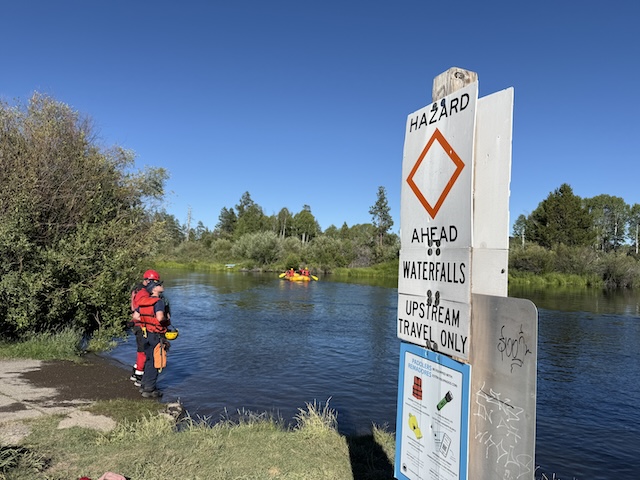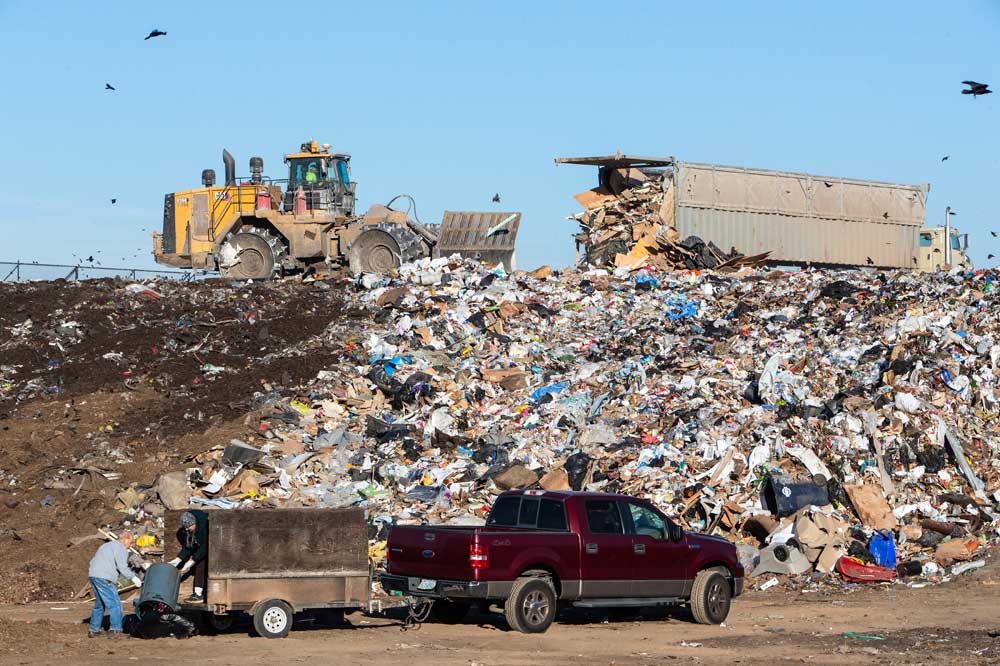Fort Rock intrigues
Published 5:00 am Thursday, September 27, 2012
When considering where to venture for an outing last week, my primary goal was to escape the smoke from the Pole Creek Fire. I figured I should head the opposite direction and drive as far as feasible for a day trip.
I decided to check out Fort Rock State Park, a geologic gem and dramatic dose of scenery about 90 minutes southeast of Bend.
Trending
My next quandary was whether to wait until the weekend so I could take my 6-year-old daughter. The hiking out there is easy and I knew she would love scrambling around on the rocky cliffs and exploring the kid-sized caves. Ultimately, I realized I should use the weekend for the unpleasant chore of moving into a new home. My household was boxed up and waiting for a U-Haul and a day off to move. So, on Friday, I hit the road by myself shortly after 9 a.m. and by 10:30 a.m., I was hiking up the dusty little trail that starts on the southeastern edge of the Fort Rock monolith, near a picnic area, outhouses and the information kiosks.
I hadn’t entirely escaped the smoke; a haze clouded the horizon. But once inside the formation, its rust-brown color sharply contrasted the bright blue sky. It was as though a magic force field dissipated the smoke inside the ring of walls.
That very idea of magic got me missing my kid. Like the castles of Scotland, this fortress inspires fantastical reverie. I knew my daughter would crawl and climb all over the rocks and into the small caves, pretending to be a dragon or a lizard, the latter of which were (in real-life) scampering all over the place.
Fort Rock’s sheer walls tower some 300 feet high, and the entire crescent-shaped formation measures more than a half mile across, according to Alan D. St. John’s book “Oregon’s Dry Side, Exploring East of the Cascade Crest.”
This formation was created between 50,000 and 100,000 years ago, a result of underwater eruptions. The entire area was a lake, nearly 600 square miles, under which were numerous faults. When magma arose, it met groundwater and exploded, St. John wrote.
“A lathery mixture of wet ash, rocks, lake mud and vaporized water was spewed in great arcs and built a layered mud ring around an exploding crater. This hot glop cooled and hardened into a type of volcanic rock known as tuff,” according to the book.
Trending
Geologists say it took several eruptions to create the ring. Then, when the volcanic activity calmed down, waves from the Fort Rock lake sculpted the walls that exist today. By about 13,000 years ago, the climate was more arid and the lake was gone, St. John wrote.
The steep walls offer protection and habitat for golden eagles, red-tailed hawks and prairie falcons, according to David L. Anderson’s book, “50 Hikes in Oregon.”
As I wandered under the walls, raptors soared overhead. I’m not sure what they were because my 40-year-old vision is fuzzy, and my old, cheap sunglasses are scratched, further obscuring eyesight, but I think they were red-tailed hawks.
At the heart of the circle, someone has built cairns near a stand-alone pillar that illustrates the forces of erosion. The pillar also offered a little bit of shade for my hairy mutt, who was already seeking out cool, dusty spots to lay her belly. The day was growing hot, and the place is pretty exposed. I realized I had no sunscreen. It was probably packed in a box with other toiletries, ready to move.
The Fort Rock trail system is short. Anderson’s book says the loop is about 1.75 miles. But there’s plenty to explore. On the western side, a trail climbs up to a crack in the wall that offers northwestern views of a couple of other rock formations bulging upward from an endless sea of rabbitbrush, bitterbrush, sagebrush and grasses.
Climbing over the walls or on the outside of the walls would be dangerous and is not recommended.
This vantage point would have been a great place to contemplate and meditate, if it weren’t for the overpowering sound of my dog panting. I shared my water bottle with her, which I’m sure would disgust some people but made me feel like a responsible caregiver. Because for the most part, I was pretty unprepared for both of us. I carried one water bottle and an apple in a canvas grocery bag slung over my shoulder (my backpack was stuffed into a moving box somewhere). You can get away with that in this small hiking area in which its impossible to get lost, when you’re not traveling with a kid.
I sat at the vantage spot, pulled off my running shoes and dumped out rocks. I’d recommend hiking boots only because the gravely dust is deep and can creep into your shoes. Alas, my boots were long packed away.
Colorful splashes of chartreuse and orange lichen brightened up the rock wall where I sat. The rock was pocked with fairy-sized indentations, that is, if you think like a 6-year-old and you see fairy dwellings everywhere. I know exactly which spots will delight my daughter when the weather cools off and I bring her here to explore. But spending time alone with my own, inner 6-year-old is good sometimes, too.
While you’re in the neighborhood
If you have more time to explore, here’s a couple of other nearby sites to consider visiting after you’ve seen Fort Rock:
• Hole-in-the-Ground
About six miles northwest of Fort Rocks, is best reached by returning to U.S. Highway 31 and then driving north. In about seven miles, look for signs to Hole-in-the-Ground and take a right on a gravel road. In about five more miles, you’ll be at the mile-wide, 350- to 520-foot deep depression.
• Crack in the Ground
A 70-foot-deep, two-mile-long narrow fissure in the basaltic landscape caused by a fault line, is east of Fort Rock and about seven miles north of the small town of Christmas Valley.
Source: “Oregon’s Dry Side; Exploring East of the Cascade Crest,” by Alan D. St. John
If you go
Getting there: From Bend, drive south through La Pine on U.S. Highway 97, then head southeast (left) on state Route 31, toward Reno. It’s about 30 more miles until you turn left at Fort Rock Road. In six miles, take another left on Cabin Lake Road and follow signs to Fort Rock parking lot.
Difficulty: Easy
Cost: Free
Information: 800-551-6949 or www.oregonstate parks.org/park_40.php








